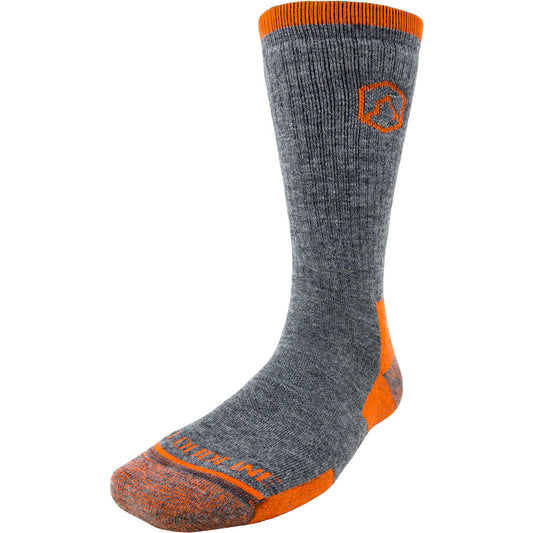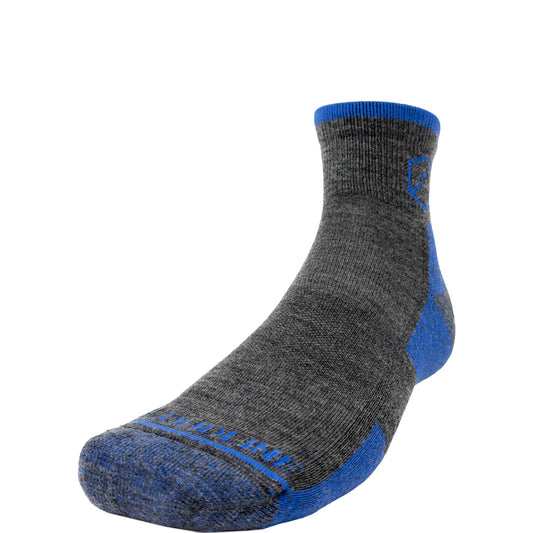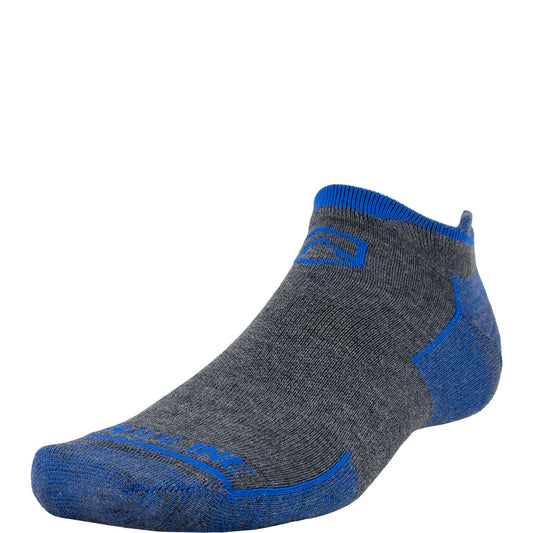
Step Up Your Game with Merino Wool Compression Socks for Adventure Travel
The Ultimate Merino Wool Compression Socks Guide for Adventure Travelers
When you're trekking through mountain passes, exploring ancient ruins, or navigating urban landscapes on your adventure travels, your feet carry the burden of your journey. The right pair of socks can be the difference between blissful exploration and painful blisters. Enter merino wool compression socks – the unsung heroes of adventure travel that combine the natural wonders of merino wool with the supportive benefits of compression technology.
As adventure enthusiasts ourselves, we understand that every step matters when you're far from home. That's why we've created this comprehensive guide to help you understand why merino wool compression socks deserve a prime spot in your travel pack.
Why Merino Wool Stands Above Other Materials
Merino wool isn't just another fabric – it's nature's technical performance material. Sourced from merino sheep that roam the highlands of New Zealand and Australia, this remarkable fiber has evolved over centuries to protect these animals in extreme conditions.
The Science Behind Merino's Magic
Merino wool fibers possess a unique molecular structure that sets them apart from synthetic alternatives. Each fiber features microscopic scales that overlap like roof shingles, creating tiny air pockets that trap warmth while still allowing vapor to escape. This natural architecture explains why merino wool feels cool in summer yet warm in winter.
At the microscopic level, merino wool fibers can absorb up to 30% of their weight in moisture without feeling wet. The moisture gets pulled inside the fiber through a process called "wicking," leaving your skin feeling dry even during intense activity. This isn't just comfortable – it's crucial for preventing blisters and hot spots during long adventure days.
Unlike synthetic materials that require chemical treatments to prevent odor, merino wool contains natural lanolin that inhibits bacterial growth. This means you can wear your merino wool compression socks for multiple days without developing the notorious "hiker funk" – a particularly valuable trait when laundry facilities are scarce during your adventures.
Understanding Compression Technology
Compression technology isn't new – it has been utilized in medical settings for decades. However, its application in performance socks has revolutionized how adventurers care for their feet during extended activities.
How Graduated Compression Works
Quality compression socks feature graduated pressure, meaning they're tightest at the ankle and gradually decrease in pressure as they move up the leg. This strategic design enhances circulation by helping blood return to the heart against gravity.
When you're standing or walking for hours exploring new terrain, blood can pool in your lower extremities, causing swelling, fatigue, and discomfort. Graduated compression counteracts this by applying precise pressure that helps push that blood back up toward your heart, delivering fresh oxygen and nutrients to working muscles while removing metabolic waste products.
The mmHg (millimeters of mercury) rating on compression socks indicates their pressure level. For adventure travel, look for socks in the 15-20 mmHg range – firm enough to provide benefits without being uncomfortably tight. This moderate compression level offers the perfect balance of support for all-day adventures without restricting movement.
"After switching to merino wool compression socks, I was able to extend my daily hiking distance by almost 20% with noticeably less fatigue. The difference was especially apparent when tackling consecutive long-distance days on the Appalachian Trail." – Professional Hiker and Adventure Guide
The Perfect Marriage: Merino Wool + Compression
When merino wool and compression technology unite, they create a synergistic effect that's greater than the sum of their parts. This combination addresses virtually every foot-related challenge adventure travelers face.
Superior Moisture Management
The compression element enhances merino's natural moisture-wicking properties by maintaining close contact between the fabric and your skin. This maximizes the efficiency of moisture transfer away from your feet.
During strenuous ascents or tropical explorations, this enhanced moisture management becomes invaluable. Your feet remain drier, cooler, and less susceptible to friction-related injuries that can derail your adventure plans.
Additionally, the compression element helps distribute merino wool's insulative properties evenly across your foot and calf, eliminating cold spots that can develop in standard socks during low-activity periods like rests or descents.
Performance Benefits for Adventure Travelers
Adventure travel demands peak performance from both your body and your gear. Merino wool compression socks deliver on multiple fronts, offering benefits that directly translate to enhanced adventures.
Reduced Fatigue and Faster Recovery
The graduated compression in these specialized socks improves venous return – the process of blood flowing back to your heart. This enhanced circulation delivers more oxygen to your muscles and accelerates the removal of lactic acid and other metabolic byproducts.
For adventure travelers, this translates to legs that feel fresher at the end of a long day of exploration. Even more importantly, it means faster recovery overnight, allowing you to wake up ready for the next day's adventures rather than hobbling around with stiff, sore legs.
Many seasoned travelers report that wearing merino wool compression socks during long-haul flights helps reduce jet lag's physical symptoms by preventing blood pooling and swelling during extended periods of sitting. This means you can hit the ground running when you reach your destination rather than wasting precious vacation days recovering.
Blister Prevention and Foot Health
Blisters form when friction, heat, and moisture combine – three factors that adventure travel often produces in abundance. Merino wool compression socks counteract each of these factors:
- The compression element minimizes sock movement, reducing friction
- Merino wool's moisture management keeps feet drier
- The temperature-regulating properties prevent overheating
Beyond blister prevention, the antimicrobial properties of merino wool help maintain foot health during extended adventures. When you're far from home, preventing fungal infections and other foot ailments becomes particularly crucial – issues that could otherwise cut your adventure short.
Choosing the Right Merino Wool Compression Socks
Not all merino wool compression socks are created equal. When investing in pairs for your next adventure, consider these key factors to ensure you're getting the best possible performance.
Merino Content and Quality
The percentage of merino wool in the socks directly impacts their performance. Look for socks with at least 50% merino content for optimal benefits. However, be aware that 100% merino wool socks generally lack durability for intense adventure travel.
The best merino wool compression socks blend premium merino with complementary fibers like nylon for durability and a small percentage of elastane or spandex to maintain compression levels. This thoughtful combination creates socks that deliver merino's benefits while standing up to the rigors of adventure.
Fiber fineness, measured in microns, also matters significantly. Premium merino wool used in high-quality socks typically ranges from 17.5 to 19.5 microns – fine enough to feel soft against skin while maintaining durability. Lower-quality merino with thicker fibers above 20 microns will feel scratchy and uncomfortable during extended wear.
Compression Levels and Fit
For adventure travel, look for compression levels between 15-20 mmHg (millimeters of mercury). This moderate compression level provides meaningful circulatory benefits without being uncomfortably tight during all-day wear.
Proper sizing is absolutely crucial with compression socks. Unlike regular socks where a slightly wrong size merely feels a bit off, incorrectly sized compression socks can either provide no benefits (if too loose) or restrict circulation (if too tight). Always measure your calf circumference and follow the manufacturer's specific sizing guide rather than simply using your shoe size.
| Activity Type | Recommended Compression Level | Key Features to Look For |
|---|---|---|
| Long-distance hiking | 15-20 mmHg | Extra cushioning in heel and forefoot, seamless toe |
| Trail running | 15-20 mmHg | Lightweight, arch support, ventilation zones |
| Long-haul flights | 15-25 mmHg | Higher calf coverage, non-restrictive band |
| High-altitude adventures | 20-30 mmHg | Extra warmth, maximum compression for improved circulation |
Care and Maintenance for Extended Lifespan
Quality merino wool compression socks represent an investment in your adventure comfort. With proper care, they can accompany you on journeys for years to come.
Washing and Drying Best Practices
While merino wool has natural antimicrobial properties that resist odor, regular cleaning still matters for maximum performance and lifespan. Follow these guidelines to maintain your socks' compression and merino benefits:
Turn your socks inside out before washing to allow cleaning agents to reach areas that contact your skin directly. Use mild detergents free from enzymes and bleaches, which can damage merino fibers and elastane. Many outdoor gear companies offer special wool washes that clean effectively while preserving the natural lanolin in merino.
Machine washing on gentle cycles with cold water works well, but avoid fabric softeners which coat fibers and reduce merino's moisture-wicking abilities. For travelers, hand washing with biodegradable soap allows you to refresh your socks anywhere in the world.
Air drying is strongly preferred over machine drying. If you must use a dryer, choose the lowest heat setting, as excessive heat can damage the elastane fibers that provide compression. When air drying, lay socks flat rather than hanging them to prevent the weight of the wet sock from stretching out the compression elements.
Real-World Performance: Testimonials from Adventure Travelers
The true test of any gear comes in the field. Adventure travelers consistently report that merino wool compression socks exceed expectations across diverse environments and activities.
From Mountain Summits to Desert Treks
Mountaineers tackling high-altitude challenges report that merino wool compression socks provide crucial benefits in extreme conditions. The improved circulation helps combat altitude-related swelling while merino's temperature regulation prevents both overheating during strenuous climbs and cold feet during rest periods.
Desert trekkers face different challenges – excessive heat and abrasive sand. Here, merino's moisture management prevents the maceration (softening of skin from moisture) that makes feet vulnerable to abrasions. The compression element minimizes the sock movement that can introduce sand and cause friction.
Urban adventurers covering 20+ miles daily exploring new cities appreciate the reduced fatigue that allows them to maximize their experiences. Many report that their merino wool compression socks let them extend their daily explorations by several hours compared to conventional socks.
Frequently Asked Questions About Merino Wool Compression Socks
Common Concerns Addressed
How many pairs should I pack for a two-week adventure?
Most travelers find 2-3 pairs sufficient for extended journeys. Merino wool's odor-resistant properties mean you can wear each pair multiple days, rotating between them and washing one pair each evening.
Are merino wool compression socks worth the investment?
When you calculate the cost per wear and factor in the potential to prevent trip-ruining foot problems, premium merino wool compression socks offer exceptional value. Many adventurers report their quality pairs lasting through years of challenging conditions.
Can I wear merino wool compression socks in hot climates?
Absolutely. Despite the common misconception that wool is only for cold weather, merino wool's exceptional temperature regulation actually makes it ideal for hot conditions. The moisture management and cooling effect often make merino compression socks more comfortable than cotton or synthetic alternatives in high temperatures.
How tight should compression socks feel?
Properly fitted compression socks should feel snug but not painful. You should feel even pressure throughout, with the tightest sensation at the ankle that gradually decreases up the leg. If you experience numbness, tingling, or see indentation marks that don't fade quickly, the compression level is too high for you.
Ready to elevate your adventure travel experience? The right pair of merino wool compression socks might be the gear upgrade that makes the biggest difference to your comfort, endurance, and enjoyment on your next journey. Your feet carry you through your adventures – they deserve the best care possible.




